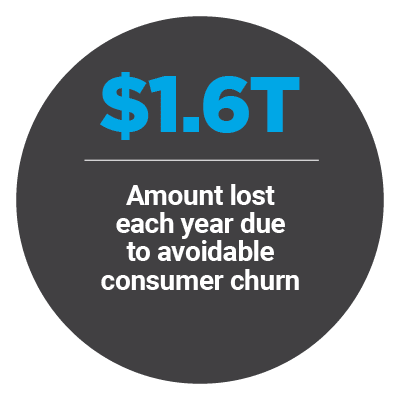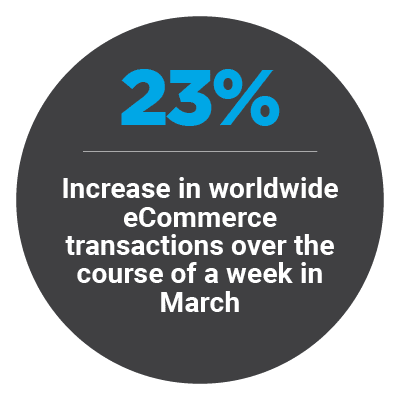Onboarding Sellers At The Speed Of Revenue

 eCommerce ordering shot up since the pandemic was declared on March 12 and brick-and-mortar businesses closed its doors, leading to a boom in both businesses and consumer transacting through digital marketplaces. This increase in online purchases comes with its unique challenges, however. Digital retailers still need to protect against fraudulent listings with false products or the impersonation of legitimate consumers, for example, scams that have increased in parallel with online payment volume. These online retailers must ensure they are seamlessly supporting the rush of new customers as well as new business partners or vendors looking to sell, while also keeping bad actors off their platforms.
eCommerce ordering shot up since the pandemic was declared on March 12 and brick-and-mortar businesses closed its doors, leading to a boom in both businesses and consumer transacting through digital marketplaces. This increase in online purchases comes with its unique challenges, however. Digital retailers still need to protect against fraudulent listings with false products or the impersonation of legitimate consumers, for example, scams that have increased in parallel with online payment volume. These online retailers must ensure they are seamlessly supporting the rush of new customers as well as new business partners or vendors looking to sell, while also keeping bad actors off their platforms.
 The latest “Digital Consumer Onboarding Tracker®” examines how eCommerce companies are rethinking onboarding, and why innovative tools for authentication and fraud protection play a critical role. The Tracker also looks at the broader impact of the COVID-19 pandemic in this space, and how retailers are responding to short- and long-term trends brought on by the virus.
The latest “Digital Consumer Onboarding Tracker®” examines how eCommerce companies are rethinking onboarding, and why innovative tools for authentication and fraud protection play a critical role. The Tracker also looks at the broader impact of the COVID-19 pandemic in this space, and how retailers are responding to short- and long-term trends brought on by the virus.
Around the Digital Onboarding World
Technology giant Google is one of the companies that is looking to newer ways to onboard during this shifting period for eCommerce. The company has announced changes to guidelines for its Google Shopping platform, noting that both existing and new merchants can now list their inventories on the site without charge. This change has been in development for some time, according to the company, but the COVID-19 pandemic and its subsequent impact on eCommerce and consumer spending pushed up the timeline for the shift.
Amazon is also among those experimenting with onboarding merchants and third-party sellers more easily during the COVID-19 pandemic. The eCommerce company has been trialing a video conferencing system for seller onboarding, which works by replacing face-to-face interviews with video calls. It has tested out the solution with over 1,000 merchants in China and the U.S., according to the company. The introduction of the video system also comes as Amazon fights against a rising amount of fraud attempts on its platform, from false sellers promoting trumped-up COVID-19 cures to bad actors impersonating legitimate brands. The hope is that by conducting these interviews, the platform will be able to weed out illegitimate sellers before they can slip onto their site.
 Retailers lose approximately $1.6 trillion per year thanks to customers that abandon their relationships with them, something that is often caused by time-consuming onboarding processes. Utilizing identify verification tools that can properly distinguish between bad actors and legitimate new customers is, therefore, critical. Implementing newer tools such as facial or fingerprint identification could potentially speed up this part of the onboarding process, and such biometric solutions are thus becoming more interesting to retailers as fraud continues to grow more complex and more damaging.
Retailers lose approximately $1.6 trillion per year thanks to customers that abandon their relationships with them, something that is often caused by time-consuming onboarding processes. Utilizing identify verification tools that can properly distinguish between bad actors and legitimate new customers is, therefore, critical. Implementing newer tools such as facial or fingerprint identification could potentially speed up this part of the onboarding process, and such biometric solutions are thus becoming more interesting to retailers as fraud continues to grow more complex and more damaging.
For more on these and other stories, visit the Tracker’s News & Trends.
Why Zibbet Is Turning to Automated Tools for Seller Onboarding
As consumers turn to buy more goods on eCommerce sites, sellers are also racing to get their products listed online. Third-party sellers and individual entrepreneurs are starting to represent a larger amount of traffic for these sites as well. Sellers often want to list their products on multiple platforms, but that often means multiple onboarding experiences, some of which can take as long as a month to complete, according to Jonathan Peacock, founder and CEO of eCommerce sales platform Zibbet in a recent interview with PYMNTS. Streamlining that onboarding experience and making it easier for sellers to concentrate more quickly on their main goal — selling — is thus critically important for platforms, he continued.
To find out how Zibbet is utilizing automation tools like enhanced product categorization to create a more streamlined onboarding experience, visit the Tracker’s Feature Story.
Deep Dive: COVID-19’s Effect on eCommerce  Security and the Future of Onboarding
Security and the Future of Onboarding
The U.S. Federal Trade Commission (FTC) recently reported American consumer shave already lost $13.4 million due to COVID-19-related fraud attempts — and that is just the losses the FTC knows about. Online shopping sites have been particularly targeted by these bad actors, with schemes ranging from false product listings for face masks and medical suppliers to the ever-popular email phishing tactics. eCommerce retailers are thus increasingly searching for ways to differentiate fraudsters from legitimate customers during the pandemic, requiring the implementation of robust authentication solutions as part of their onboarding process.
To learn more about the impact of the COVID-19 pandemic on the future of consumer onboarding, visit the Tracker’s Deep Dive.
About The Tracker
The “Digital Consumer Onboarding Tracker®,” a partnership with Melissa, examines the latest KYC, digital onboarding and online verification news and trends. The Tracker also examines the role alternative data sources and related technologies such as advanced analytical tools can play in this space as onboarding needs grow more sophisticated.